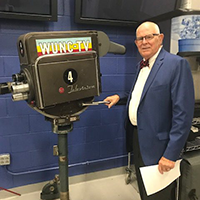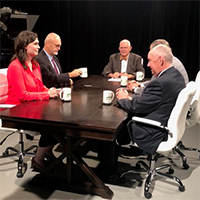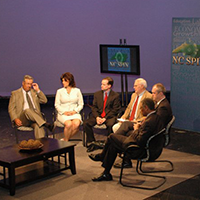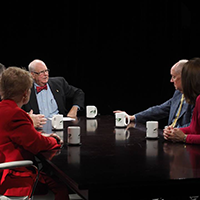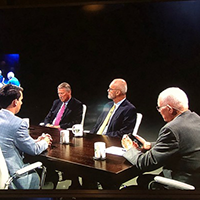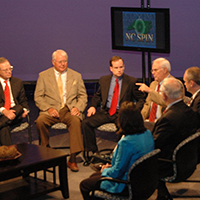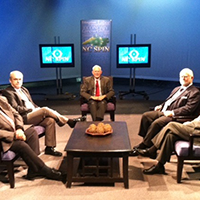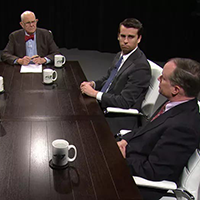Can we predict the economy?
Published October 9, 2025
As I have mentioned in previous columns, I’ve made over 3000 presentations in my career as an economist. Most of them occurred during my 43 year career at NC State, but as a retiree I am still asked to speak, and I try to accommodate the requests. Talking economics is one of my favorite activities!
I have a standard format for my presentations. I begin with a joke, usually one that involves economists. I like to put people in a jovial mood, and I also like to demonstrate that economists and economics – who many think are both dull – can be funny.
I then open the formal presentation by discussing the current economy, focusing on the situation for businesses, the job market, and, of course, inflation and interest rates. I next move to economic policy and review proposals and debates between the President and the Congress, followed by a discussion of the Federal Reserve (the “Fed”).
After some comments about the North Carolina economy and its comparison to the national economy, I move to what audiences really want to hear -forecasts for the future. Audiences want to know where inflation is headed, how good or bad the job market will be, what jobs will be helped and what jobs will be hurt by AI (artificial intelligence), will interest rates rise or fall, and, of course, what will happen to the stock market. My somewhat humorous, but true, forecast for the stock market is, it will fluctuate.
Talking about the past and current economy is relatively easy for economists because we have the numbers. Making forecasts is another matter because we have to make educated guesses about what is unknown.
Economists make economic forecasts based on their knowledge of the interactions in the economy. Economists formalize these interactions by developing “models” of the economy. An economic model is a mathematical representation of the interactions of the economy. Once developed, users input data and then let the model predict the results on the economy.
For example, recently the Fed lowered its key interest rate. Many expect this move will cause other interest rates to also fall, and therefore will increase economic activities like purchasing homes, vehicles, and other big-ticket items where borrowing is needed. Users of economic models can input the information on the size of the Fed’s interest rate drop into the model and then let it calculate the impacts on a variety of economic outcomes, such as how much home building and homebuying are expected to increase.
Hence, it appears economists have a straightforward way of making accurate predictions. Why then is the economics profession often wrong with their forecasts? Indeed, most surveys show economists are correct in their predictions only 20% to 30% of the time. Economics as a discipline has been around 250 years. Shouldn’t that be enough time to have worked out the kinks and make forecasts more reliable?
Here’s my answer. Economics is a “social science” and not a “physical science.” Physical sciences like physics, chemistry and geology are based on the non-living natural world. Relationships and reactions are specific and long-lasting, and hence predictions are virtually certain.
In contrast, economics is a social science, along with sociology, psychology, and anthropology. These disciplines study behavior in the living human world. Hence, relationships are subject to change as a result of human decisions. For example, how people who are considering borrowing react to lower interest rates can vary from year to year, and it may take economists some time to discover the change and use it in their forecasts.
Here’s a good recent example. After the pandemic there was a surge in the inflation rate. The year-over-year inflation rate rose to over 9%, the highest in forty years. The consensus view among economists and policy makers had been that inflation would remain moderate while the high unemployment rate, which jumped during the pandemic, would be the problem. But the exact opposite happened, with prices rapidly rising while the jobless rate plunged.
The mistake was the economic models were based on the reactions of workers, consumers, and businesses that existed prior to the pandemic. But the pandemic changed many attitudes about the economy, particularly in the labor market. Many older workers delayed returning to working because they were still fearful of being exposed to Covid. But more important were the changes in work attitudes among young workers. Equipped with funds to pay their bills made available from the numerous government programs created during Covid, such as stimulus checks, the “great resignation” occurred during and immediately after Covid. Annual job quits doubled between 2020 and 2022. With fewer workers, many companies couldn’t produce enough to keep up with the post-Covid spending, and hence prices jumped.
My advice is to consider many economic forecasts and see if there is some degree of consistency. However, be particularly cautious of forecasts following significant changes in the economy. Today’s imposition of tariffs is one of those potential “game-changing” situations, as is the application of AI (artificial intelligence) in the economy. Both are and will change forecasts.
Should you listen to economists’ forecasts? I think you should, but with some caution and skepticism. But, you decide.
Walden is a William Neal Reynolds Distinguished Professor Emeritus at North Carolina State University.
